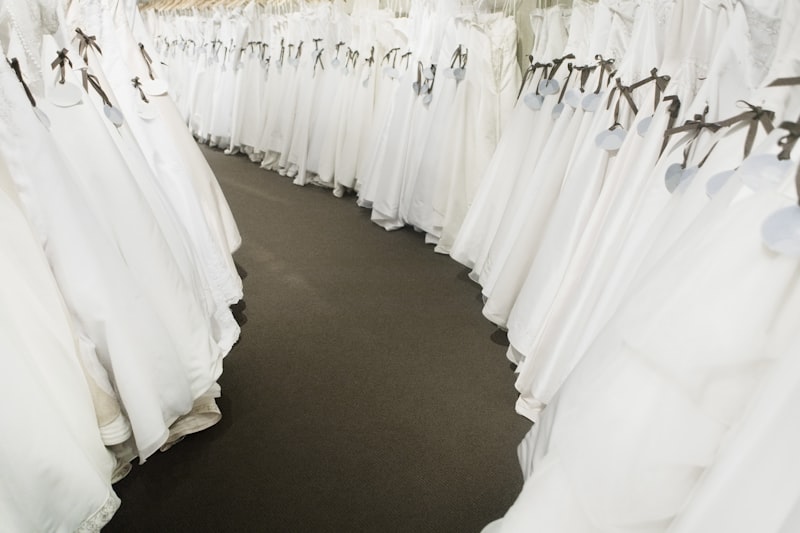Navigating Intellectual Property Issues in Bridal Fashion OEM
Navigating Intellectual Property Issues in Bridal Fashion OEM
In the rapidly evolving world of bridal fashion, Original Equipment Manufacturer (OEM) relationships play a crucial role in the design and production of stunning wedding attire. However, with the rise of global trade and the proliferation of online marketplaces, navigating intellectual property (IP) issues in bridal fashion OEM has become increasingly complex. This article aims to illuminate the key challenges and considerations involved in managing IP rights within this unique industry while offering useful insights for designers, manufacturers, and brands alike.
Understanding OEM in Bridal Fashion
OEM refers to a manufacturing model where businesses delegate the production process to third-party suppliers while retaining responsibility for design and branding. In the bridal fashion industry, OEM arrangements can significantly reduce costs and increase efficiency, allowing designers to focus on creativity and innovation. However, engaging in OEM relationships also raises critical IP concerns.
Key Intellectual Property Issues in Bridal Fashion OEM
The bridal fashion industry is rich with creativity, and as such, the potential for IP infringement is high. Here are some of the significant IP issues stakeholders should be aware of:
- Trademark Infringement: Trademarks protect the brand identity of bridal fashion designers. If an OEM manufacturer uses a designer's trademarked logo or brand name without permission, it can lead to confusion among consumers and dilute the brand's reputation.
- Copyright Concerns: Original designs, patterns, and sketches used in bridal fashion can be protected under copyright law. If an OEM manufacturer replicates these designs without authorization, it constitutes copyright infringement.
- Patents and Product Innovations: Innovations in fabric technology or dress construction methods may qualify for patent protection. Designers should ensure that their innovative aspects are patented to prevent unauthorized use by OEM manufacturers.
| IP Issues | Considerations |
| Trademark Infringement | Monitor OEM practices and enforce brand rights. |
| Copyright Concerns | Register designs and actively protect creations. |
| Patents | File for patents on unique innovations. |
Best Practices for Protecting Intellectual Property in Bridal Fashion OEM
Designers and brands engaged in OEM relationships must adopt strategic measures to safeguard their intellectual property. Here are several best practices:
1. Conduct Thorough Research
Before entering an OEM partnership, conduct comprehensive due diligence to assess the manufacturer’s reputation, track record, and adherence to IP laws. Researching the OEM’s previous engagements and any past legal disputes can provide invaluable insights into their business practices.
2. Draft Comprehensive Contracts
Contracts should clearly define the scope of work, production expectations, and IP rights. Include clauses that specify the ownership of designs and any prohibitions against unauthorized use of brand materials. Having a well-drafted contract can significantly reduce the risk of future IP disputes.

3. Register IP Rights
Designers should actively protect their IP by registering trademarks and copyrights for their designs. Additionally, they should consider filing patents for any unique processes or products, ensuring that legal ownership is established and recognized.
4. Monitor and Enforce Rights
Staying vigilant is paramount. Regularly monitor the market for potential infringements, including online platforms and boutiques. If a violation occurs, promptly enforce IP rights through cease-and-desist letters or legal action if necessary.
Challenges in Global Markets
With the global nature of OEM in bridal fashion, IP challenges can be magnified due to varying laws and enforcement practices across different countries. Understanding the IP landscape of manufacturing countries—such as China, India, or Vietnam—is essential. Each jurisdiction has its own regulations regarding IP protection, and navigating these complexities can be daunting.
IP Rights in Major Manufacturing Regions
| Region | IP Laws and Practices |
| China | China has strengthened its IP regulations but still poses challenges in enforcement. |
| India | India's IP laws are evolving, but issues persist in trademark enforcement. |
| Vietnam | Vietnam has improved its IP framework, making it increasingly attractive for OEM. |
Case Studies: Successful IP Management in Bridal Fashion OEM
Several renowned bridal fashion brands have successfully navigated IP challenges with their OEM partners. Here are a few notable examples:
Case Study 1: Vera Wang
Vera Wang, a prominent figure in bridal fashion, emphasizes strict monitoring of her designs through registered copyrights. By establishing a clear framework for her OEM partners, she has effectively maintained her brand's integrity and avoided potential infringements.
Case Study 2: Pronovias
Pronovias employs a proactive strategy by enforcing their trademarks across various online platforms, successfully preventing unauthorized sellers from using their branding. This strategy includes active monitoring and legal action against infringers.
Conclusion: Embracing Innovation While Protecting IP
Navigating intellectual property issues in bridal fashion OEM is both a challenge and a necessity for designers and brands looking to thrive in a competitive marketplace. By understanding IP rights, investing in thorough research, drafting comprehensive contracts, and actively monitoring their brand, stakeholders can protect their creative assets while tapping into the benefits of OEM manufacturing.
As the bridal fashion industry continues to evolve, so too will the complexities surrounding IP. By embracing innovation and remaining vigilant in their IP strategies, designers and manufacturers can secure their place at the forefront of this enchanting industry. A proactive approach allows stakeholders to unleash their creativity without the fear of intellectual property infringement, ultimately leading to sustained success.
In summary, every designer entering the bridal fashion OEM market must be well-informed about the potential IP risks and adopt measures to mitigate them. Prioritizing intellectual property is not just about protecting one’s creations; it is also about fostering an environment of creativity and trust throughout the industry.
